This brew is part of a project that the Scottish Craft Brewers (http://scottishcraftbrewers.org/), of which I'm a new member, are running. Basically, everyone brews the same recipe, expect that everyone is allocated a different yeast to use. I was given Wyeast 3522 - Belgian Ardennes. The plan is to drink them at the next get-together and see what affect the various yeast strains have.
The yeast came in a "smack pack", which I hadn't used before. Quite fun giving it a slap and then leaving the pack to swell up. I then pitched that into 2 litres of wort to (hopefully) double it, as the beer is a little on the strong side for the number of cells in the original pack.
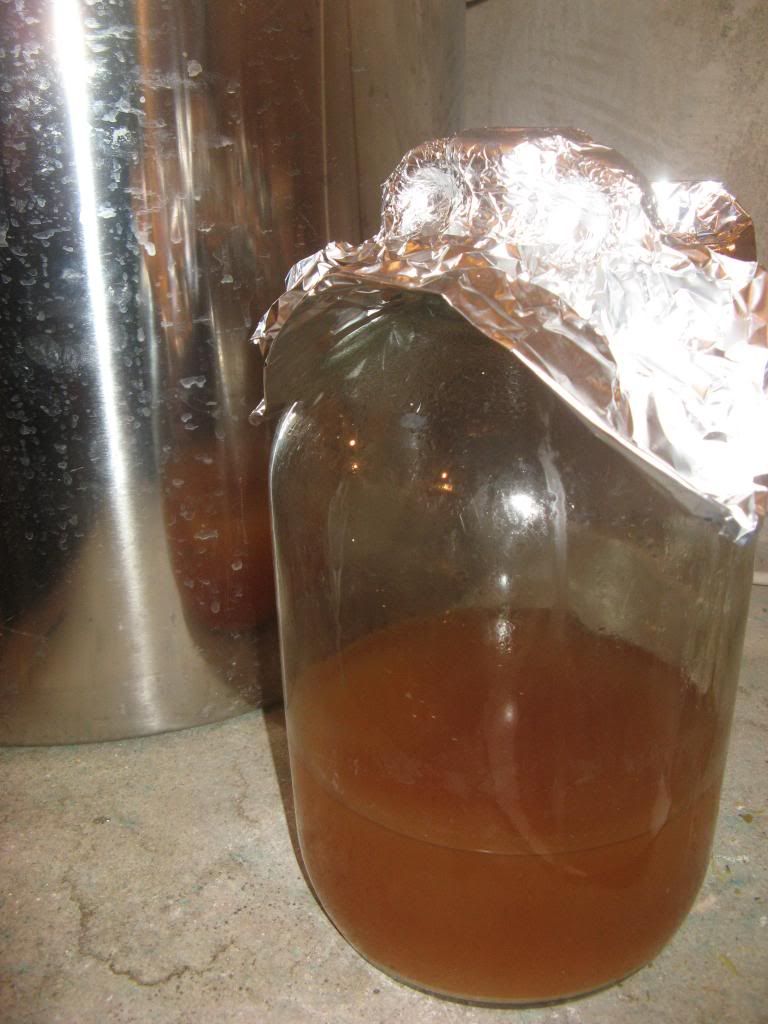
Obligatory grain shot. This is the first time I've used Special-B. It smells great!
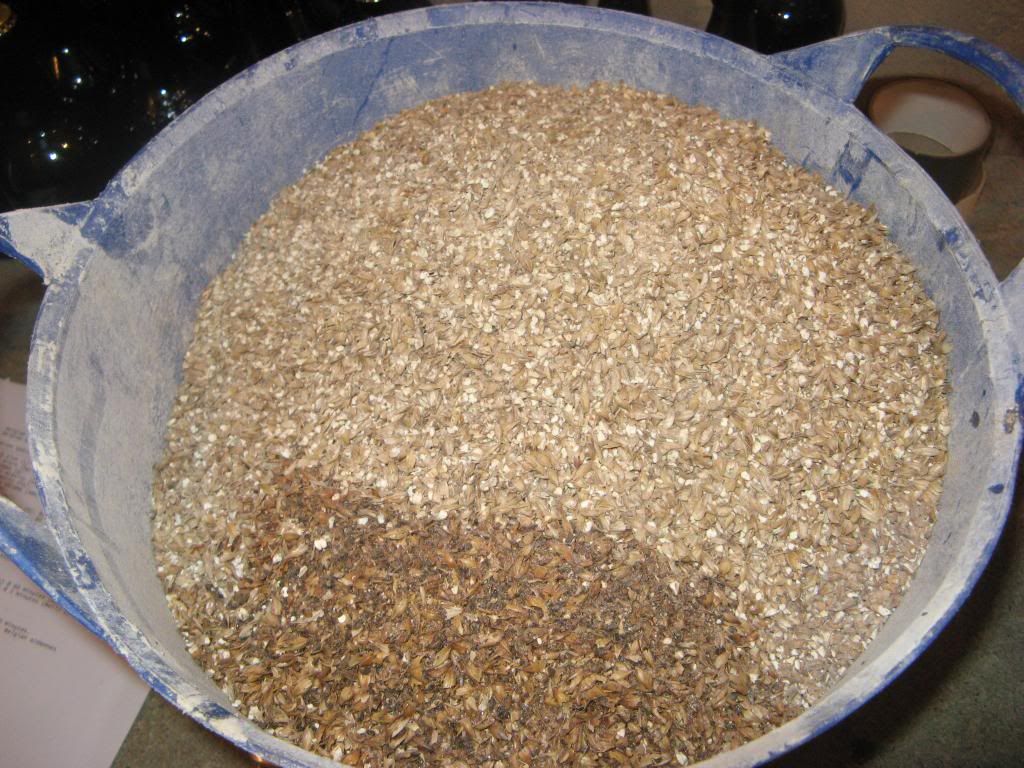
The mash went fine. I tried recirculating the wort at the end using my pump to set up the filter bed, instead of using a layer of tin-foil and returning it with a jug. I'm not sure if this was any better or not, but I saved a bit of tin-foil :)
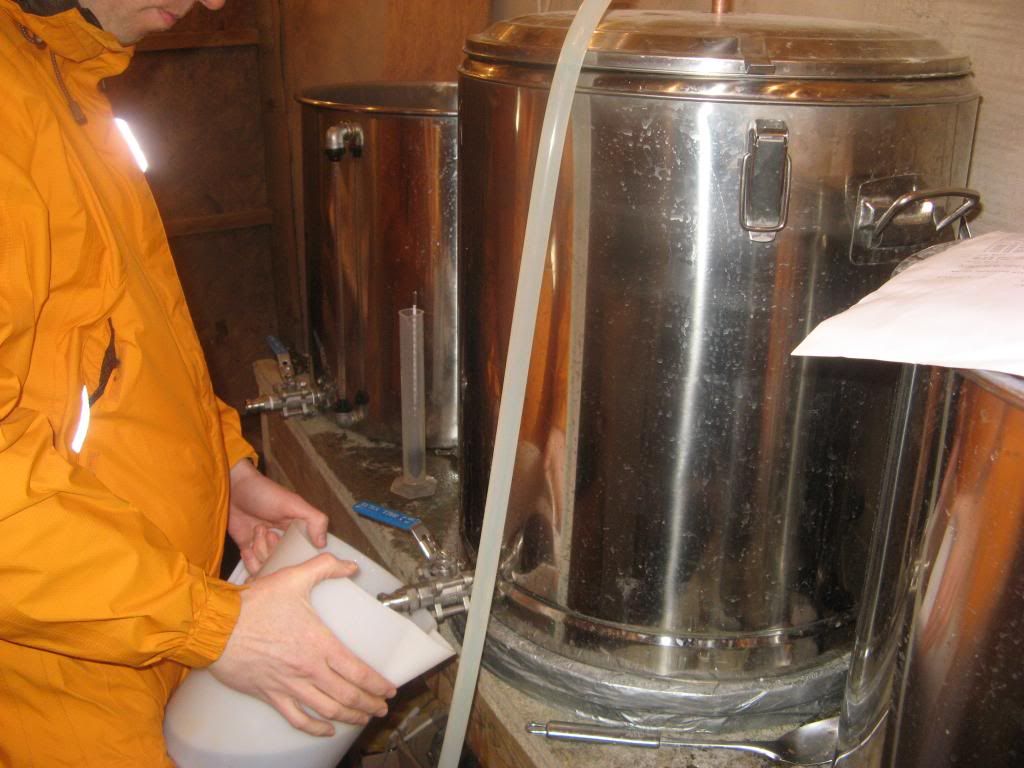
I had to sparge a little longer than normal, and boil for 90 mins instead of the specified 60 mins, to get to the target 1070 OG. The result was 16 litres of wort in the FV.
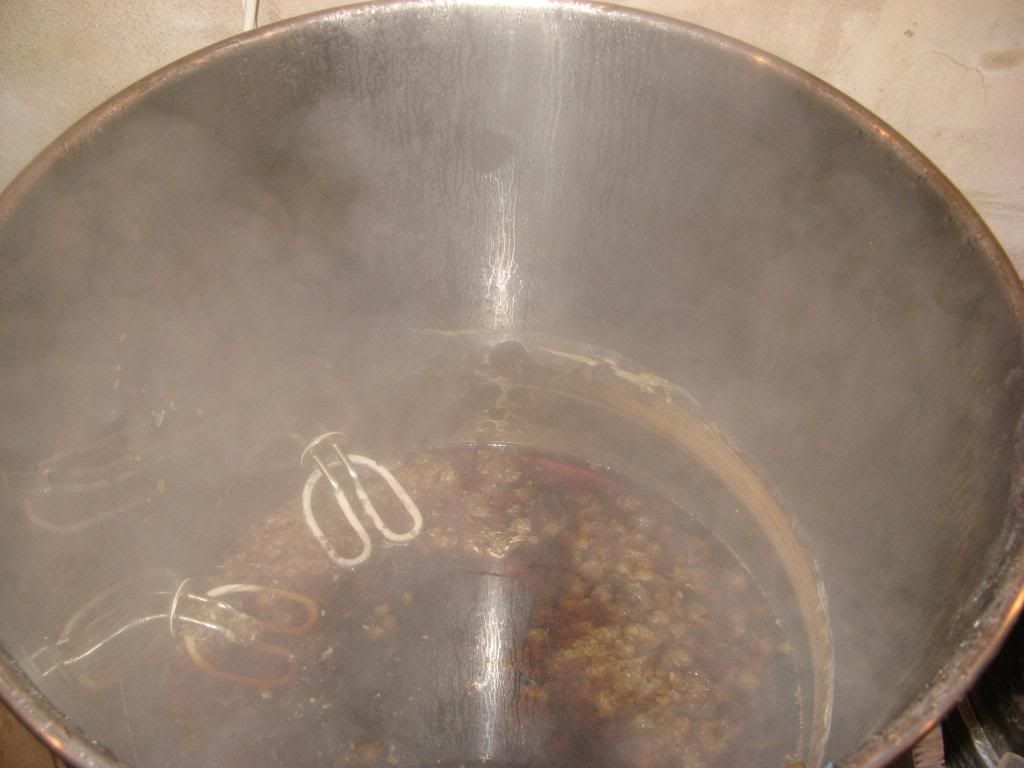
Lots of lovely hops too. Anyone ever had to explain the contents of these brown paper bags to a policeman?
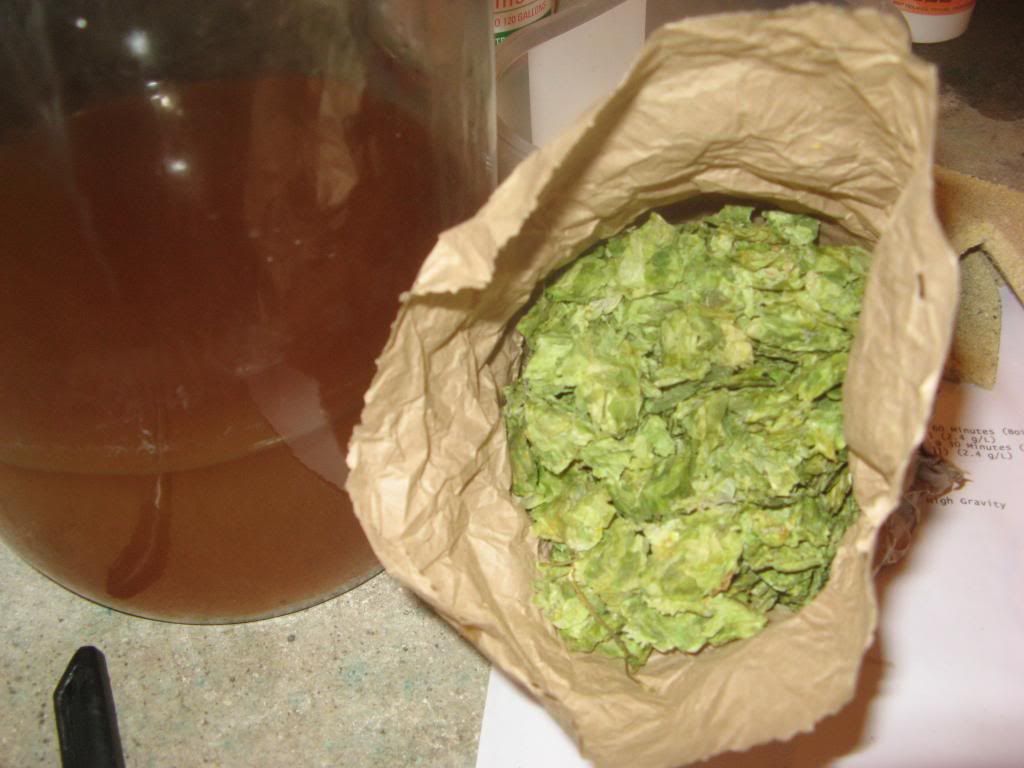
I then deployed my new high-tech wort aeration device...
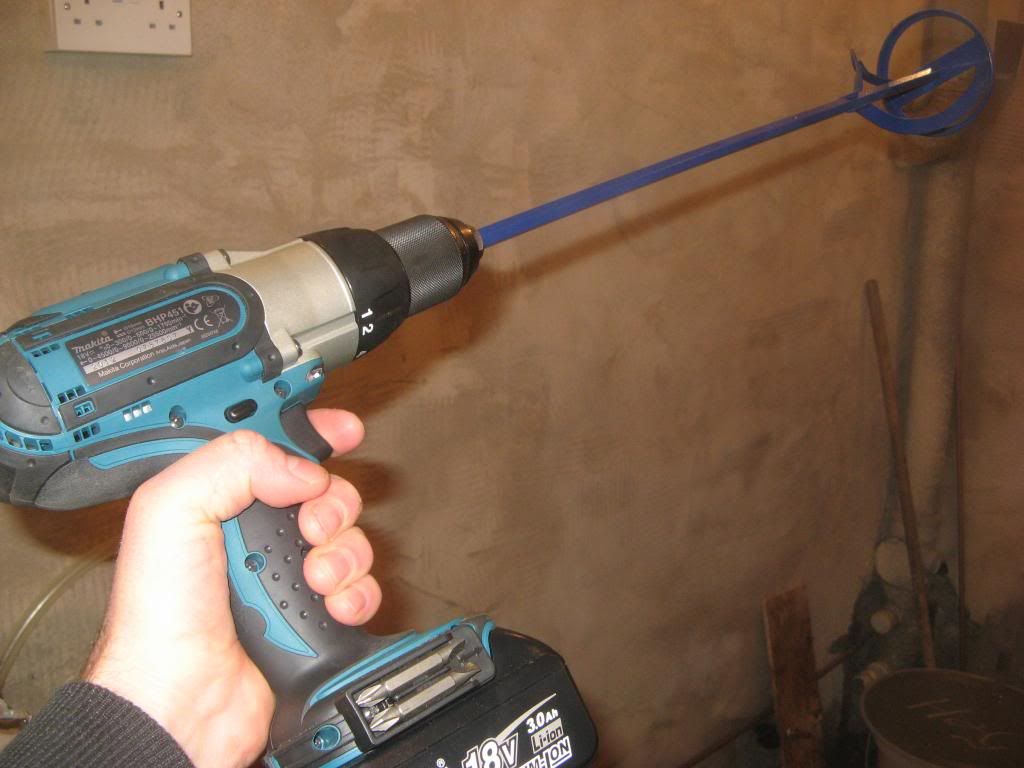
Fermentation started very quickly (12 hour lag). The result of the aeration, or a good starter?
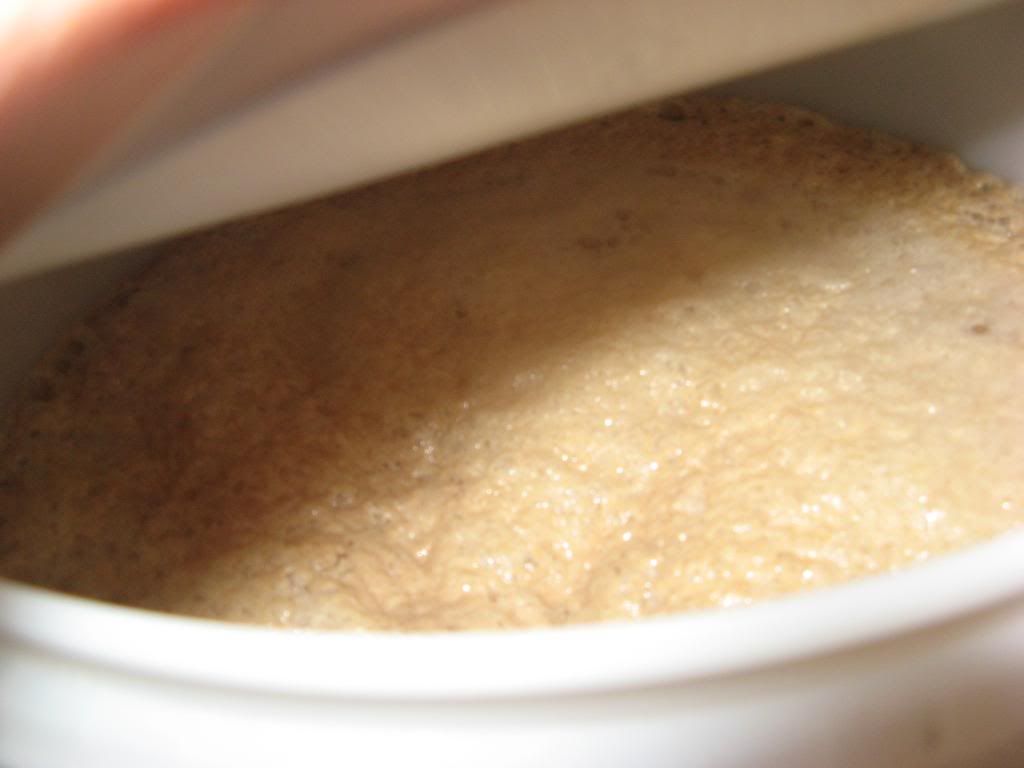
I've transcribed the recipe provided into Brewmate...
Belgian Dark Strong Ale
Recipe Specs
----------------
Batch Size (L): 21.0
Total Grain (kg): 5.800
Total Hops (g): 100.00
Original Gravity (OG): 1.071 (°P): 17.3
Final Gravity (FG): 1.016 (°P): 4.1
Alcohol by Volume (ABV): 7.22 %
Colour (SRM): 11.8 (EBC): 23.2
Bitterness (IBU): 30.7 (Average)
Brewhouse Efficiency (%): 80
Boil Time (Minutes): 60
Grain Bill
----------------
4.000 kg Pale Malt (68.97%)
1.000 kg Munich I (17.24%)
0.400 kg Cane Sugar (6.9%)
0.200 kg Special-B (3.45%)
0.200 kg Wheat Malt (3.45%)
Hop Bill
----------------
90.0 g Saaz Leaf (3.1% Alpha) @ 60 Minutes (Boil) (4.3 g/L)
10.0 g Saaz Leaf (3.1% Alpha) @ 5 Minutes (Boil) (0.5 g/L)
Misc Bill
----------------
Single step Infusion at 64°C for 90 Minutes.
Fermented at 18°C with Wyeast 3522 - Belgian Ardennes
The yeast came in a "smack pack", which I hadn't used before. Quite fun giving it a slap and then leaving the pack to swell up. I then pitched that into 2 litres of wort to (hopefully) double it, as the beer is a little on the strong side for the number of cells in the original pack.

Obligatory grain shot. This is the first time I've used Special-B. It smells great!

The mash went fine. I tried recirculating the wort at the end using my pump to set up the filter bed, instead of using a layer of tin-foil and returning it with a jug. I'm not sure if this was any better or not, but I saved a bit of tin-foil :)

I had to sparge a little longer than normal, and boil for 90 mins instead of the specified 60 mins, to get to the target 1070 OG. The result was 16 litres of wort in the FV.

Lots of lovely hops too. Anyone ever had to explain the contents of these brown paper bags to a policeman?

I then deployed my new high-tech wort aeration device...

Fermentation started very quickly (12 hour lag). The result of the aeration, or a good starter?

I've transcribed the recipe provided into Brewmate...
Belgian Dark Strong Ale
Recipe Specs
----------------
Batch Size (L): 21.0
Total Grain (kg): 5.800
Total Hops (g): 100.00
Original Gravity (OG): 1.071 (°P): 17.3
Final Gravity (FG): 1.016 (°P): 4.1
Alcohol by Volume (ABV): 7.22 %
Colour (SRM): 11.8 (EBC): 23.2
Bitterness (IBU): 30.7 (Average)
Brewhouse Efficiency (%): 80
Boil Time (Minutes): 60
Grain Bill
----------------
4.000 kg Pale Malt (68.97%)
1.000 kg Munich I (17.24%)
0.400 kg Cane Sugar (6.9%)
0.200 kg Special-B (3.45%)
0.200 kg Wheat Malt (3.45%)
Hop Bill
----------------
90.0 g Saaz Leaf (3.1% Alpha) @ 60 Minutes (Boil) (4.3 g/L)
10.0 g Saaz Leaf (3.1% Alpha) @ 5 Minutes (Boil) (0.5 g/L)
Misc Bill
----------------
Single step Infusion at 64°C for 90 Minutes.
Fermented at 18°C with Wyeast 3522 - Belgian Ardennes



